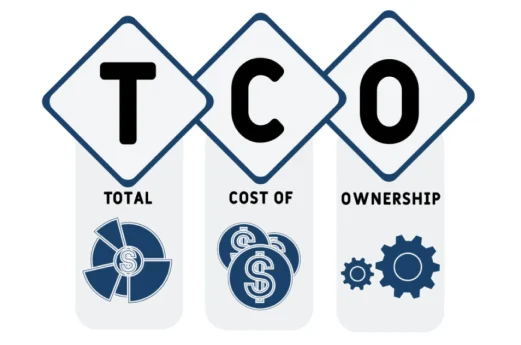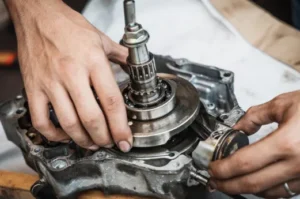Knowledge Center
The TCO Perspective in Bearing Selection: Don’t Let Purchase Price Dictate Your Productivity
Have you ever been in this situation? As a maintenance or technical manager, you know a critical piece of equipment needs a high-performance bearing to ensure long-term reliability. But the purchasing department points to the lowest quote and says, “This one is the cheapest.” This tug-of-war between “price” and “value” plays out in factories every single day.
To win this battle, you need a powerful weapon: Total Cost of Ownership (TCO). TCO is an advanced financial perspective that proves a component’s “true cost” is far more than its purchase price. This article will use a real-world case study to show you how to use the language of TCO to prove to management that buying the more expensive option is actually the cheaper decision.
Section Navigation
#1 Precision, Clearance and Preload
#2 Bearing Failure Analysis Atlas
#3 Cost & Efficiency Optimization & Reliability Upgrade
What Is TCO and Why Is It Critical for Bearings?
Total Cost of Ownership (TCO) is the sum of all direct and indirect costs incurred throughout the lifecycle of an asset.
Real-World Analogy: Buying a car is a classic TCO decision. Car A costs $15,000 but has poor fuel economy and high maintenance costs. Car B costs $20,000 but is fuel-efficient and extremely reliable. Looking only at the sticker price, Car A wins. But if you calculate three years of fuel, insurance, and repair costs, Car B is likely the more economical choice.
For a bearing, TCO is critical because: The bearing itself is cheap, but the cost of its failure is incredibly expensive. A small bearing is the heart of an entire production line. When it stops, the entire system can grind to a halt.
The TCO Iceberg: Seeing the Massive Costs Below the Surface
The total cost of a bearing is like an iceberg.
- Above the Water (The Visible Cost): Purchase Price
- This is the number on the quote, the sole focus of traditional purchasing models.
- Below the Water (The Invisible but Critical Costs):
- Cost of Downtime: This is the largest and most often overlooked component of TCO. It includes:
- Lost Production: How many products were not made for every hour of downtime?
- Idle Labor: The entire production line staff waiting for the repair.
- Wasted Energy: Restarting equipment may require extra warm-up and energy.
- Risk of Delivery Penalties: Potential fines for failing to meet order deadlines.
- Cost of Maintenance & Labor:
- Labor Hours: The time your maintenance team spends on preparation, removal, installation, and testing.
- Spares Management: Frequent failures mean holding more inventory.
- Other Indirect Costs:
- Energy Consumption: High-performance bearings often have lower friction and consume less energy.
- Lubricant Consumption: A longer service life can mean fewer re-lubrication cycles.
Case Study – The Annual Cost Showdown in a High-Temp Fan
Scenario: A critical high-temperature exhaust fan in a cement plant’s clinker cooling system. The bearing’s operating environment is harsh (high heat + dust), making it a chronic problem area.
Option A: The Low-Price Standard Bearing
- Product: A standard deep groove ball bearing.
- Purchase Cost: $30 / unit.
- Historical Performance: Fails every 3 months on average, requiring 4 replacements per year.
Option B: The High-Performance Solution
- Product: A bearing engineered for high temperatures, featuring special heat-treated steel, high-temp grease, and advanced seals.
- Purchase Cost: $180 / unit (6 times the price of Option A).
- Expected Performance: Designed to last well over a year; scheduled for one planned replacement annually.
Key Financial Data:
- Time per replacement: 4 hours.
- Labor cost: 2 technicians * $25/hour/person = $50/hour.
- Cost of Downtime (from Finance Dept.): $800/hour.
Annual Total Cost of Ownership (TCO) Calculation:
| Cost Item | Option A: Low-Price Bearing | Option B: High-Performance Solution |
| Annual Purchase Cost | $30/unit * 4 units/year = $120 | $180/unit * 1 unit/year = $180 |
| Annual Labor Cost | 4 hrs/event * $50/hr * 4 events/yr = $800 | 4 hrs/event * $50/hr * 1 event/yr = $200 |
| Annual Downtime Cost | 4 hrs/event * $800/hr * 4 events/yr = $12,800 | 4 hrs/event * $800/hr * 1 event/yr = $3,200 |
| Annual TCO | 120 + 800 + 12,800 = $13,720 | 180 + 200 + 3,200 = $3,580 |
The Verdict is Clear!
Although the purchase price of Option B is 6 times higher, its annual TCO is only 26% of Option A’s. Choosing the high-performance bearing saves the company $10,140 in net operating costs every year.
How to Change the Conversation: From Technical Specs to Financial Impact
The next time you need to justify a budget request, try abandoning this approach:
- “We need a high-temp, well-sealed bearing because its quality is better.”
Instead, use the language of TCO:
- I propose we procure the high-performance bearing in Option B. While its unit price is $15
- 0 higher, our analysis shows it will reduce the annual total operating cost for this fan from $13,720 to $3,580. This investment offers an annualized ROI of over 6,500%. It will directly cut our emergency downtime by 12 hours per year and significantly improve the stability of our production line.
A Tip for Suppliers:
Helping your clients perform a TCO analysis is the key to transforming your relationship from a “parts vendor” to a “value partner.” A professional TCO report is more persuasive than any product brochure.
Reading the Past to Predict the Future
Analyzing TCO is, in essence, fixing a problem after it has occurred. But its true value lies in preparing for the future. The knowledge we gain from this stark data today directly translates into the wisdom that improves equipment reliability and lowers operating costs tomorrow. TCO is not just a calculation tool; it’s a strategic mindset that helps us see through the fog of price to find the truth of value, enabling us to make the most profitable decisions for our business.
Not finding what you need?
If you have enquiries about our product or solutionservice, please contact us via email.

